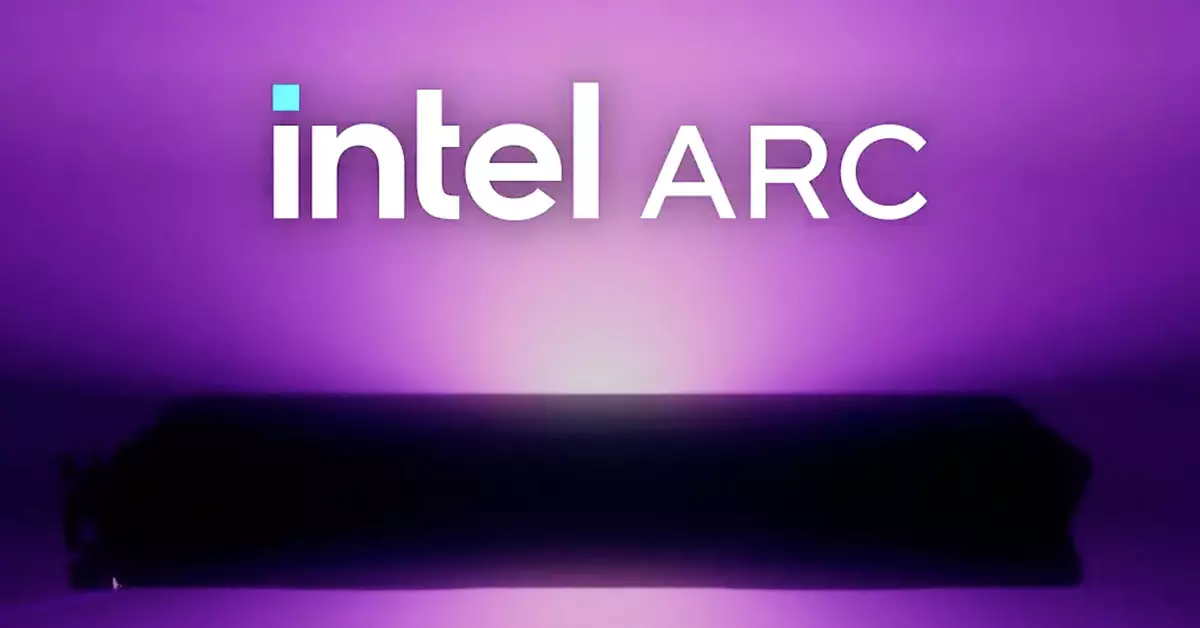In the rapidly evolving world of computer technology, Intel is making significant strides in the graphics processing unit (GPU) landscape with its upcoming Battlemage series. As the competition grows fiercer among GPU manufacturers like Nvidia and AMD, Intel aims to carve out its niche by offering entry-level options that promise to deliver solid performance without breaking the bank. This article delves into the expected specifications and implications of the new Arc B570 and B580 models, set to capture attention this week.
Recent leaks, primarily from well-known information leaker Roland Quandt, have provided insights into the technical specifications of the Arc B570 and its slightly more powerful counterpart, the B580. The Arc B570 is anticipated to feature 18 Xe2 cores and 10GB of GDDR6 VRAM, running on a 160-bit memory bus. This hardware configuration, complemented by a dual-fan ASRock design, aims to ensure users experience smooth graphics performance.
Conversely, the Arc B580 is rumored to enhance these specifications further, boasting 20 Xe2 cores and an upgraded 12GB of GDDR6 VRAM on a broader 192-bit memory bus. The increase in clock speed to 2.8GHz for the B580 suggests that Intel is not merely focusing on numbers but rather on practical gaming performance, which should appeal to budget-conscious gamers looking for capabilities akin to those provided by higher-priced competitors.
Intel’s newest offerings are strategically positioned to compete against established players like Nvidia’s RTX 4060 Ti and AMD’s Radeon RX 7600, both of which dominate the budget category. Although definitive pricing is still under wraps, early indications suggest that Intel is targeting a lower price point to entice potential buyers. A product listing hints at a price of around $250 for the “Limited Edition” B580, significantly lower than Nvidia’s offering priced at $399 and AMD’s at $269.
This pricing strategy significantly underscores Intel’s intent to attract a wider audience, especially among gamers who are traditionally locked out of the market due to rising costs. If these chips can deliver competitive performance, they may well shift the dynamics of budget GPU competition.
With the launch announcement set for December 3rd at 9 AM ET, expectations are building around the potential success of these new graphics cards. Intel’s strategy to market itself as a worthy contender in the GPU field is commendable, considering its late entry into this competitive arena. Not only will the outcome of this event shape the immediate future of Intel’s graphics division, but it will also offer insights into how the company plans to leverage its technological advancements in the GPU segment.
The Battlemage series also reflects Intel’s commitment to high-performance graphics processing, indicating a promising future for consumers who seek affordable yet robust gaming experiences. As such, industry watchers and tech enthusiasts alike will be keenly observing how these products perform in real-world scenarios once they hit the market.
Intel’s Battlemage GPUs represent a crucial step in the company’s journey towards establishing itself as a serious competitor in the graphics card space. By targeting entry-level specifications while maintaining competitive pricing, Intel may reshape the landscape for budget gamers. However, only time will tell if the Battlemage series lives up to the hype and addresses the performance needs of consumers seeking more affordable options in a saturated market. The upcoming launch could potentially redefine Intel’s position within the graphics industry and influence the purchasing decisions of countless gamers.

